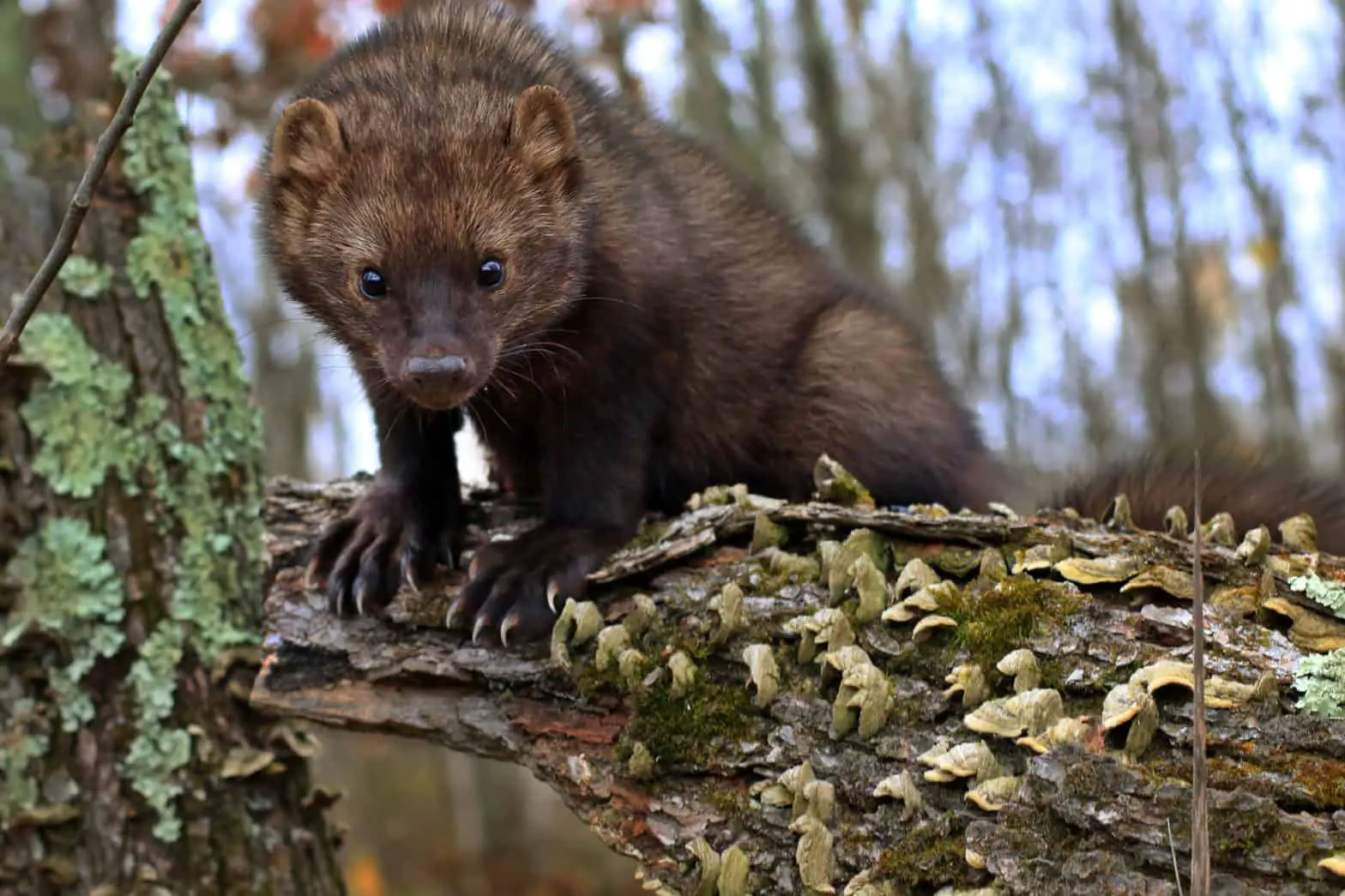Table of Contents
*This post may contain affiliate links. As an Amazon Associate we earn from qualifying purchases.
What do you know about mustelids? Most people recognize them as weasels and weasel-like animals. This classification houses a variety of the creatures. They range from the aggressive and wild wolverine to the rambunctious domesticated ferret. With that alone, it is probably not hard to tell how important these animals are to human economies, culture and even legends and folklore.
Mustelids are fierce, strong and brave predators. Just the fortitude of the wolverine alone is a reminder that they do not back down and that they can take on animals who are much larger and stronger. This is not just the case with the wolverine. All mustelids are brave, capable predators. Never count them out of a fight.
Throughout this guide, we are going to tell you some basics about mustelids, not to mention the different classifications within the group.
What Is A Mustelid?
We have already talked about how mustelids are weasels. You may even know them as the weasel family. This is a carnivorous classification of animal. Known for their fearless spirit, they can be found in North and South America, Europe, Asia and Africa naturally. To separate mustelids from other mammals, they have a few features that define them. These two features are their five-toed feet with powerful claws and their anal scent glands. In addition, most mustelids have round ears, small eyes and a long slender body with short legs. Wolverines and badgers tend to be the exception, however, with broader frames.
The Role of Mustelids in the Wild
The role of a mustelid in the wild varies from species to species. Keep in mind that while there are similarities between each one, they have a variety of different habits. With so many different diets and characteristics, you can’t expect them to all perform the same role within their environment. For instance, where one mustelid may be the dominant predator in their region, they may be lower on the food chain in another. Now, there are reasons that they are all in the same category, but the differences do matter. You can find these mammals across the globe, living naturally on every continent except for Australia and Antarctica.
Ecological Purpose
When it comes to the ecosystem, mustelids are a keystone species. What this means is that the ecosystem is dependent on their survival. Without mustelids, the entire ecosystem in which they are native to can change entirely. This is also true when it comes to introducing them into an ecosystem where they are not native. For instance, weasels introduced to New Zealand became invasive predators that have since been difficult to remove.
However, in Europe, where they are native, they are top predators. Some areas do not have predators, such as wolves or bears. Where some places rely on these predators to maintain the ecosystem, they have to rely on weasels in others.
Diet and Feeding
Mustelids have limited stomach room, but high metabolisms. Most of them are predators, capable of killing prey much larger than they are. While they might choose to hunt animals that are smaller and easier to catch, their diet isn’t restricted to smaller animals. As with most creatures, their diets depend on the season. Some may consume fruits, nuts and insects, whereas others might scavenge dead animals and larger prey.
When it comes to hunting, they tend to be solo hunters. They will usually attack their prey by going for the neck or head. Due to their high metabolism, weasels kill often and store their food. In countries where they have a habit of invading chicken coops, they tend to leave behind a mess.
Habitats
The habitats vary wildly for mustelids. Marine mustelids, such as otters, can live in oceans and rivers. Whereas other mustelids live in temperate forests, tropical forests, woodlands, tundra, grasslands and other habitats. In fact, in some European cities, you can see stone martens wandering the streets. They are highly adaptable to their environment.
Behavior
Most mustelids are nocturnal, with a few exceptions. Of the smaller, leaner ones, they are speedy and agile. They tend to scamper around quickly. The broader ones, like badgers and wolverines, on the other hand, lumber around at a slower rate.
Their social behavior is different from species to species. As with most animals, it is heavily dependent on the environment that they live in.
Classifying Mustelids
The mustelid family consists of 55 species in 24 different genera. All of these animals have several subfamilies. Given that there are some subfamilies still in debate, here are is a list of the more popular mustelid families:
- Melinae
- Taxidiinae
- Mellivorinnae
- Lutrinae
- Mustelinae
The melinae, taxidiinae and mellivorinnae families include badgers, and the lutrinae family includes otters. The mustelinae family, on the other hand, includes many weasel-like animals, such as weasels themselves, stoats, minks, polecats, martens and wolverines.
Weasels
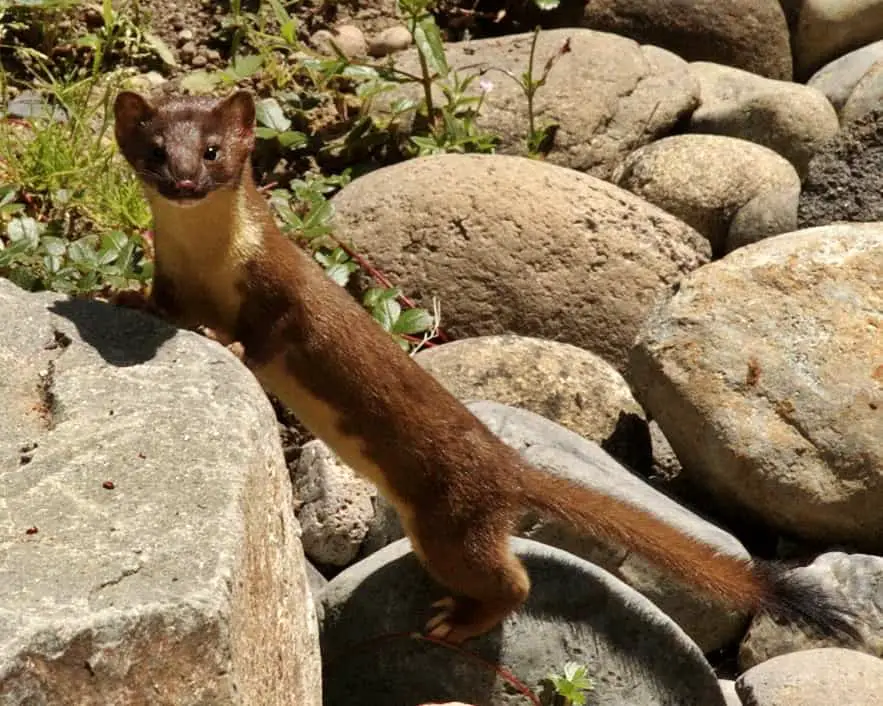
Weasels are small carnivores, recognizable by their slender, long bodies. They have flattened heads, long necks and short limbs. Generally, they have brown, short coats with lighter stomachs. In the winter, some weasels will turn white. A far as temperament is concerned, they are bold and aggressive. They are predominately carnivorous and hunt alone, seeking smaller animals. They hunt by using their slender bodies to enter the burrows of rodents. Weasel-like animals include ferrets, polecats, minks and ermine.
Wolverines
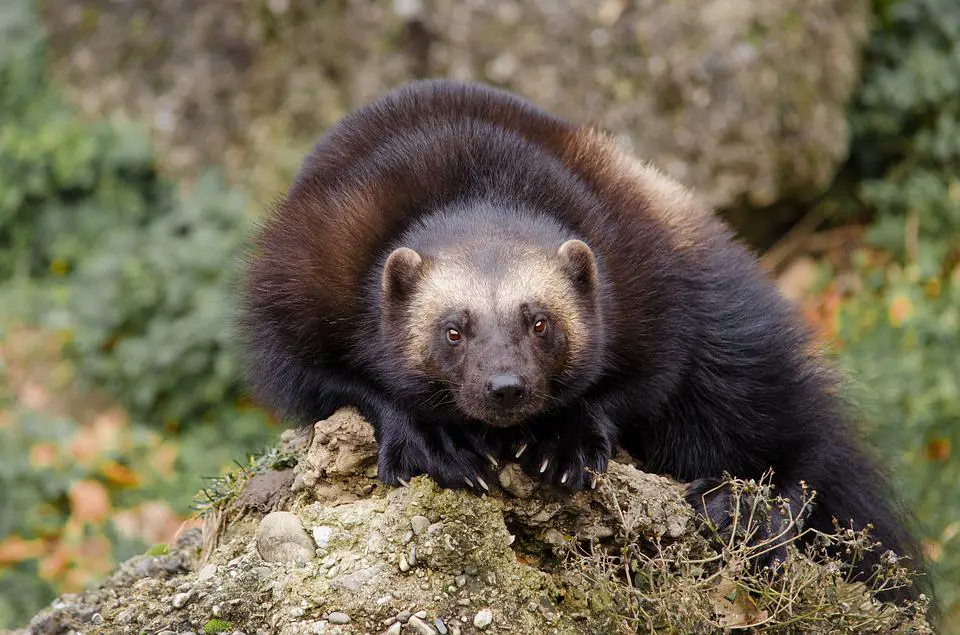
The wolverine is the largest of the mustelid family in Europe. It has a broad head, round ears and small eyes. Usually, they have dark fur and light colored facemasks and a stripe down its body. These animals have powerful, short legs that allow them to maneuver easily through the snow. These carnivores are opportunistic feeders. They eat whatever is available to them. For instance, in cold winter months, they may scavenge dead animals, while feeding on living porcupines, marmots and squirrels in the summer.
They prefer killing smaller animals, but wolverines can take down caribou and moose.
Badgers
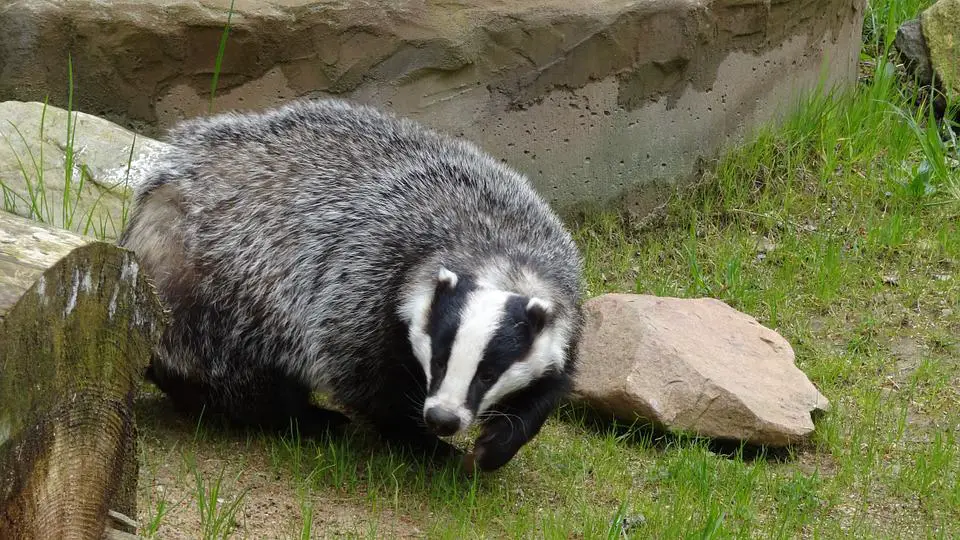
Badgers are the stout members of the mustelid family. These animals are found all over the world and come in a variety of sizes and colors. They generally have flat, wedge-shaped bodies with black, white or gold fur. With powerful jaws and large claws on their forefeet, they are renowned for their burrowing abilities. Split into six genera, the badgers are nocturnal hunters. While some badgers may be omnivorous, they mainly live off small rodents, birds, insects, reptiles, and amphibians. Some, however, will also eat fruit or roots.
Otters
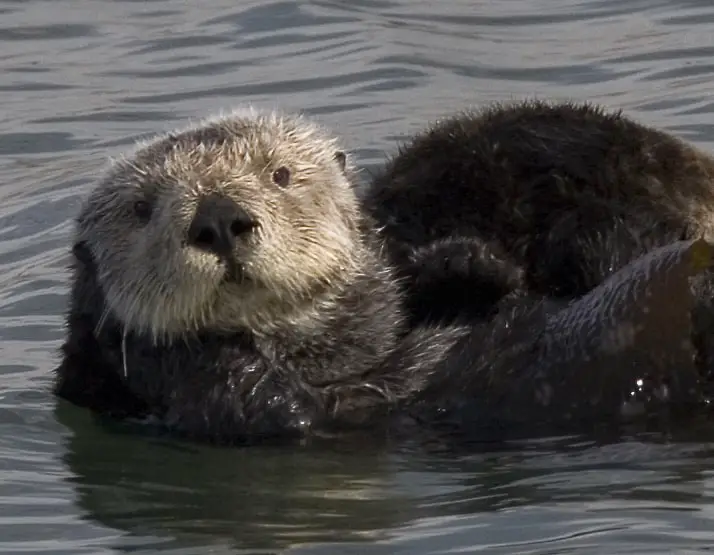
Otters are the mustelid most closely associated with water. They have webbed feet that make them powerful swimmers and can hold their breath under water for long periods. Like many of the animals in the mustelid family, they have long, slim bodies but short limbs. With 13 species of otter, they range in general size and color. However, most tend to have a brown fur, which is soft and insulated with an outer layer to trap air to keep them dry and buoyant in the water. Given that many otters live in cold water, they have a high metabolic rate and survive mostly on fish.
Tayras
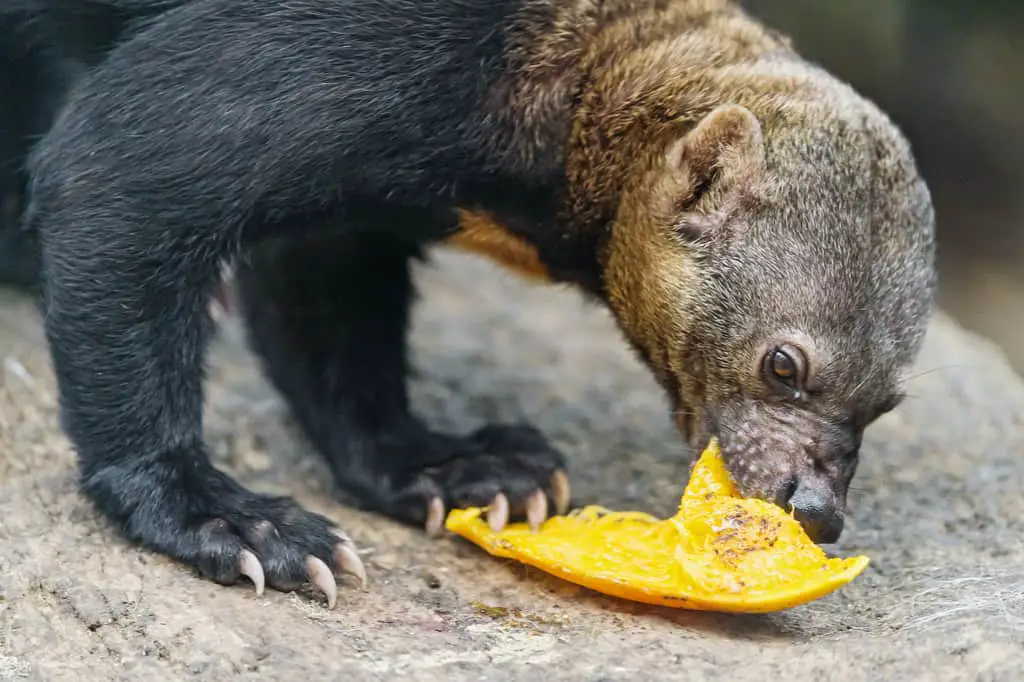
You can find the tayra in the neo-tropical forests of Central and South America. Tayras, also known as bush dogs, are large mustelids. They have a long body with large hind feet, a bushy tail and a robust head. They are about the same size as a medium sized dog. Like other members of the mustelid family, they have small, round ears. Their dense, short fur is generally dark brown, with a lighter color around the head and neck. As with other mustelids, they have thick, long claws. When it comes to their habitat, they make their home in hollow trees and burrows. Despite being skilled climbers and fast runners, they are more omnivorous than some of their cousins. They tend to eat fruit, invertebrates and reptiles. However, they also hunt small mammals.
By no means is this in an extensive list of all of the animals who fall into the category of mustelid. There are a wide variety of species with different features and characteristics. Each may have a few characteristics in common, but behavior, habits and diet are all dependent on the environment.
Conclusion: What To Know About Mustelids
The important takeaway about mustelids is that they are among one of the most renowned predators in the wild. They also come in such a variety that it is hard to judge one species by another. For instance, otters and badgers may seem like they are worlds apart. For the most part, mustelids are narrowly framed, agile mammals, with the exceptions of badgers and wolverines.
One thing that all mustelids have in common is their carnivorous appetite. Most of their diet and feeding habits depend on their location and environment. However, when it comes to hungry mustelids, they have been known to take down prey that are much larger than they are. Whether you’re interested in the wild wolverine or the friendly domesticated ferret, mustelids are fascinating.

